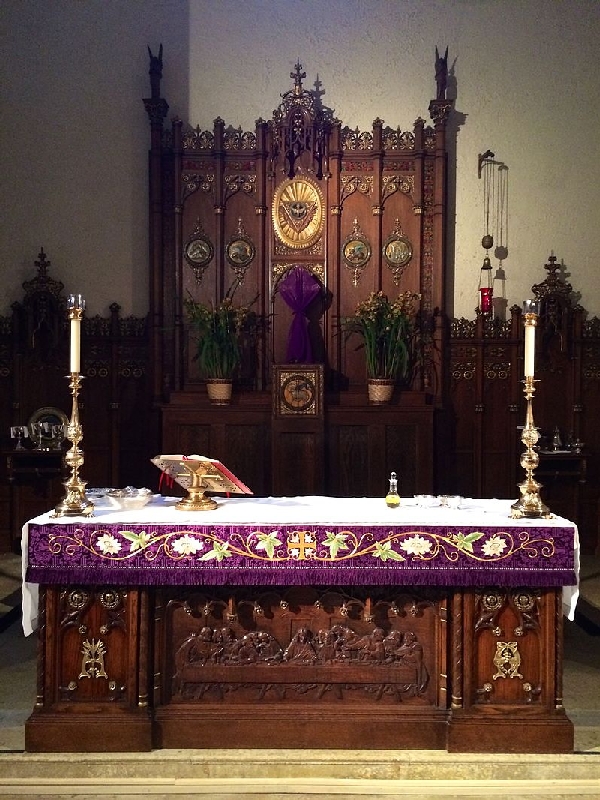Numbers 272/84: Ash Wednesday ... Palms from 2020
The day the Christian Church enters Lent. The final act on Shrove Tuesday is to burn the Palm fronds from 2020 and to prepare their ashes for marking the forehead to symbolise forgiveness. Church liturgy expects violet vestments and hangings. Lent echoes the 40 days Jesus fasted and that number ends on Passion or Palm Sunday with Jesus' triumphal entry into Jerusalem; it is harbinger of Holy Week and palm fronds are once again strewn across the highway as he arrives on a donkey.

N.B. The wooden carving on the altar is of The Last Supper.
Lent has likely been observed since apostolic times although the practice was not formalised until the First Council of Nicaea in 325AD.
...but why ashes? Jesus Himself made reference to ashes when referring to towns that had still refused to repent of sin although they had witnessed the miracles and heard the gospel. Jesus is reported by Mathew 11:21 as asserting - If the miracles worked in you had taken place in Tyre and Sidon they would have reformed in sackcloth and ashes long ago. The early Church continued the same symbolism. The penitent must 'live without joy in the roughness of sackcloth and the squalor of ashes'. Apostate Natalis came to Pope Zephyrinus 'clothed in sackcloth and ashes begging forgiveness'. For those who were required to do public penance the priest sprinkled ashes on the head of the person leaving confession. By the eighth century those who were about to die were laid on the ground on top of sackcloth sprinkled with ashes and blessed with holy water, the priest saying 'Remember that thou art dust and to dust thou shalt return. Art thou content with sackcloth and ashes in testimony of thy penance before the Lord in the day of judgment?' The ritual for the Day of Ashes is found in the earliest editions of the Gregorian Sacramentary in the 8th century. An Anglo-Saxon priest named Aelfric preached around 1000AD that “we read in both the Old Law and the New that the men who repented of their sins bestrewed themselves with ashes and clothed their bodies with sackcloth. Now let us do this little at the beginning of our Lent that we strew ashes upon our heads to signify that we ought to repent of our sins during the Lenten fast.” In the present Christian liturgy for Ash Wednesday the priest blesses the ashes of the fronds distributed on the Palm Sunday of the previous year and makes a mark on us with them. We are invited again to convert our hearts to the Lord, to renew the promises made at our baptism and finally, mindful that the kingdom of this world passes away, we must strive to live the kingdom of God now and look forward to its fulfilment in heaven.
 
Published Date: February 17th 2021
|





